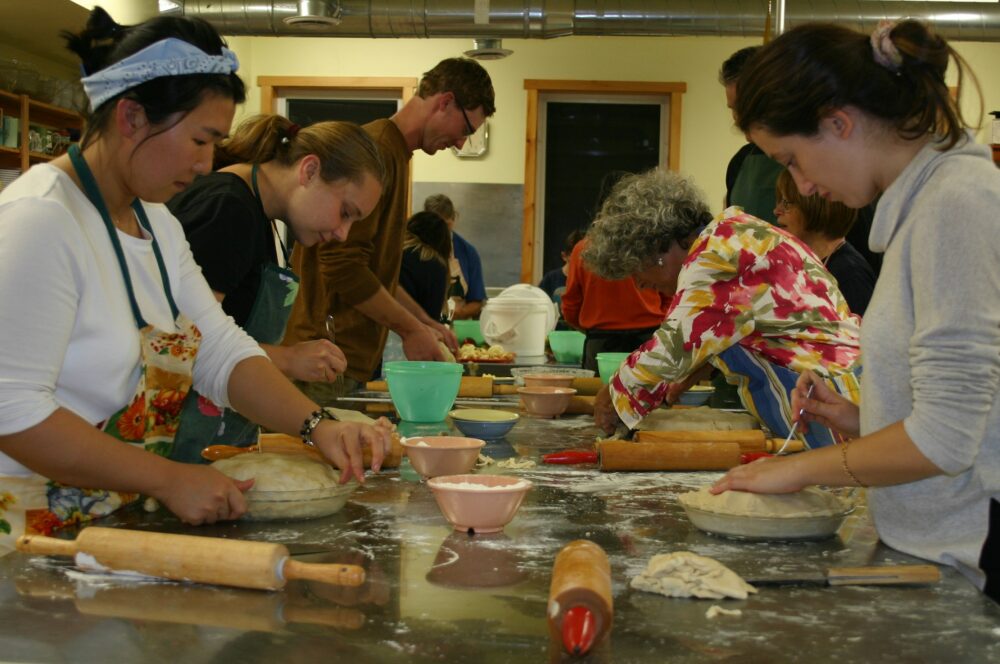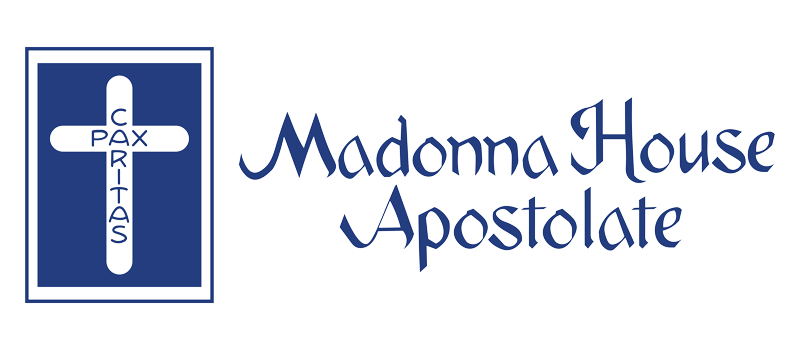
Decoration, food, and music: these are the main components of any celebration, and in teaching us how to celebrate, our foundress Catherine wrote about all three.
Decorating
“For Christmas we decorate!” Catherine said. And for her, this did not take money. “The ingenuity of love can create many beautiful decorations from very little.” At Madonna House, the decorations that grace the buildings inside and out are prepared with love, prayer and patience, in order to make it as beautiful as possible, in an expression of love for God and neighbor. “Let every guest be received as Christ,” reads the sign near the front door, and guests are received with respect and love.
Wreaths are the sign of welcome to the stranger in our midst. They are the sign of the circle of love, established by Christ. They symbolize the eternity of love, to which we are going, and they are the sign of hospitality. Since evergreens are abundant in Combermere, we use them to make many of these fresh, fragrant wreaths, which family and visitors see when they arrive. As Catherine always emphasized, we put the gift of ourselves into this decoration. This is the most important gift we can give to each other and to God. Since the greens keep well, the wreaths are made ahead of time and decorated with pine cones and donated Christmas ornaments. What material is abundant in your area? Use whatever is available, whether it be a holly tree in your yard, dried plants, even a palm tree!
In the city, you can even use the trimmings from a Christmas tree lot to decorate: smaller twigs of pine or fir can top a shelf or fill a big bowl. Add a few shiny Christmas balls for an attractive, fragrant centerpiece. We use ornaments that we’ve made of woven wheat, along with Christmas balls hung with sewing thread from the ceilings to form mobile-like groupings over the tables. This idea could lend itself to both beauty and practicality in homes where toddlers can see the pretty things, but they are safely out of reach of little hands.
At one end of our dining room is a display of dolls dressed in their native costumes representing people from all over the world. It reminds us that we are not alone in our joy. The glory of the Lord will be revealed, and all mankind together will see it (Isa. 40:5). The focal point of our decorations is the crèche, which has a place of special honor beneath the Christmas tree. The main idea is to express, through decorations, one’s love for God and neighbor during this wonderful season.
Baking Christmas Foods
Catherine wrote this about cooking. How much more it is true of Christmas cooking and baking.
The preparation of food, as well as its acquisition, has always been an expression of love. This act became exceedingly holy with the coming of Christ. His mother sanctified it in a very special manner by transforming the fruits of the earth for the nourishment of his human body, which He assumed for our sake at Christmas time.
The act of preparing food became even more holy when Christ, the Lord, used bread and wine to feed us, by transforming them into his Body and Blood.
The holiness of the kitchen is beyond the ability of human words to express. To lovingly and joyfully transform the raw products of God’s earth into food to feed one’s brothers and sisters: this is a service and a privilege almost beyond compare. Those who work in the kitchen are especially blessed, for they ‘feed the hungry’ in the most literal of terms. They are blessed, because Our Lord said, Whatsoever you do to the least of these, you do to me (Mt 25:47).
Those who eat of this food are also blessed, because they are like the disciples who sat at table with Jesus, in the village inn at Emmaus, And they knew him in the breaking of bread (Lk 24:31). May the Lord, who used bread and wine to feed us so lovingly with himself, bless all those who cook and prepare food. May he show them his Face in the faces of all those who sit down to partake of the meals they have so lovingly prepared.
Singing Christmas Carols
Madonna House has a tradition of carolling its neighbors in Combermere, Ontario, and the surrounding areas of the countryside. On an appointed evening after supper, a few groups of singers, warmly bundled against the northern Ontario cold, go from house to house and sing a traditional carol or two for each home they visit. Each group carries a cross, made with two rough branches of a tree, or two planks of wood. An old-fashioned kerosene barn lantern (plus a few flashlights) provide light for the group.
Singing together is a beautiful way to honor the Savior, the Infant of Bethlehem, as well as a good way to meet with friends, family and neighbors. Singing is a personal gift of praise and love; singing together the familiar, beloved carols of Christmas is a beautiful way to give the gift of love to Christ in your neighbors.
Afterwards, the carollers warm up with hot chocolate, tea or hot cider and a Christmas cookie or two. The carolling can be done before or after Christmas, but sometime during the season. Christmas carols of different countries are commonly sung in our dining room after meals. Usually French and English carols predominate; but Irish, Polish, Ukrainian, West Indian, Spanish carols [and those of the countries of whatever guests are present] are also sung. The reason for this is that at Christmas every land sings; the whole earth sings!
The essence of Christmas is to love one another. And what better way to love our brothers and sisters of the whole earth than to learn songs in their languages to praise God?
Adapted from Donkey Bells, (2019), pp. 81-84, available from MH Publications.




